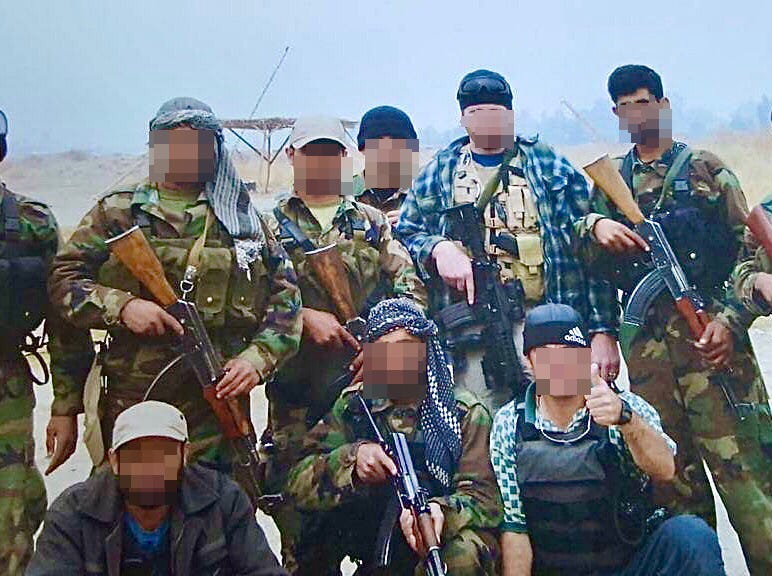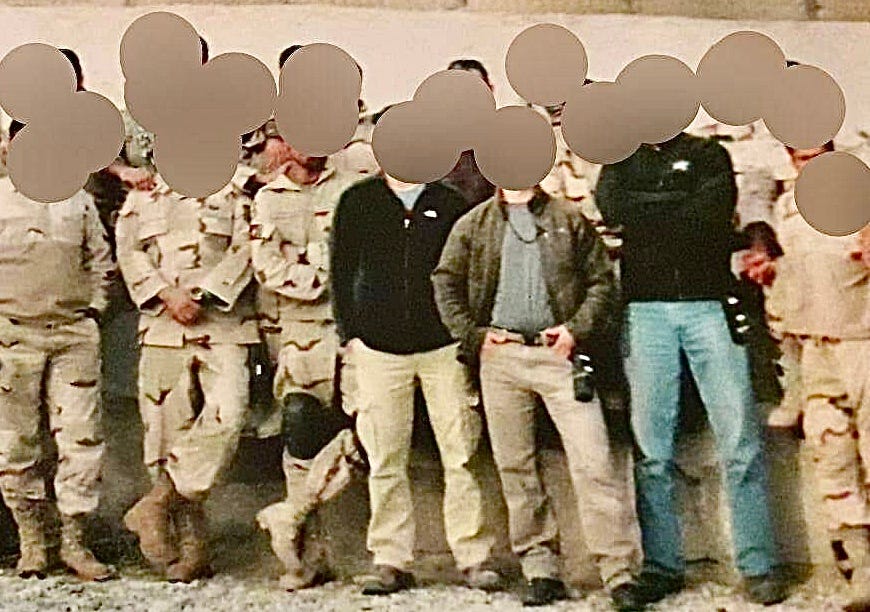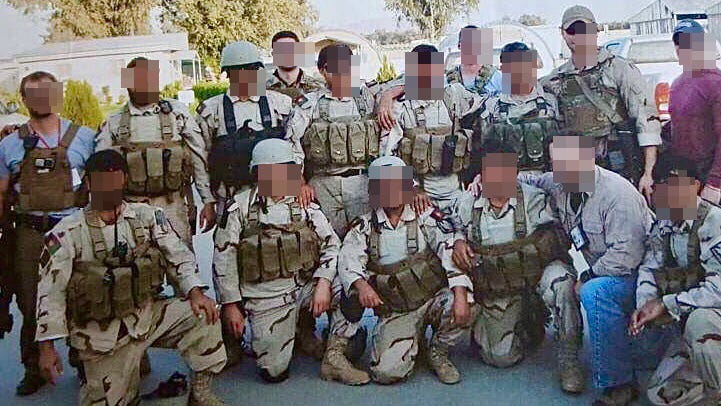Asas’s List: The Afghan Protecting 150 U.S. Air Base SIV from Taliban
Jalalabad Airport now controlled by Afghanistan, American allies on the run
Asas was the procurement officer for the U.S. military base built around Jalalabad Airport. He is now procuring safety and evacuation for 150 of his Afghan colleagues from the base who were left behind by the American government.
“I’m taking care of these guys in a very dangerous place,” Asas told me. “Every other day, the TB [Taliban] raid our guys’ houses and ask about our people. I displaced everyone, but as you said, we can't hide ourselves forever. They will find us. And if one person is arrested by the TB, then they can easily find the rest of us.”
This story is not behind a paywall so people in Afghanistan can easily read it. Thank you to my paid subscribers who fund this journalism.
Everyone on Asas’s list worked at the U.S. Forward Operating Base Fenty around the Jalalabad Airport. Over the past weekend, the Taliban showed it is back in control of Jalalabad Airport, and the first commercial flights in 20 years landed.
To get caught up, read my first story about “Asas,” which is the code name used by his American colleagues on the base.
Asas’s original goal was to make his list like an underground railroad for escaping to America. But so far, he’s using it to keep his men fed, houses and safe from the Taliban.
“When the U.S left, they gave their employees rifles for our safety. The Taliban came to my group and asked for the AK-47 rifle. More than 20 guys have been asked, and the TB are taking the rifle from them,” he explained about disarming the American allies. “Once they take the rifle, we are just targets in our homes.”
Click below to read all of my continuing coverage of the tens of thousands of Afghan SIVs who worked for the U.S. military and embassy and were left behind.
Each person on Asas’s list qualifies for a Special Immigration Visa (SIV) to come to America for working with the U.S. government, but he can’t get them rescued. “All of these guys worked with me on our base, but not one has been evacuated yet in the three months.”
Asas tracks his list on a spreadsheet that he sent me. He has each man’s contact information, the exact status of the SIV application, position on the base, location and other identifying information.
The U.S. military closed the base to aircraft in May and told the Afghan employees who lived there that they had to make a decision.
“They gave us two options. They said you can stay here -- without us -- or you can go home. They said, once you quit your job, you won't be allowed to go on the base again. So we quit, and the U.S. guys went to Kabul,” Asas told me by phone.
Air Evacuation List
Asas told me the list came together when he saw all his former colleagues waiting outside Kabul Airport to get on the American evacuation flights before the Aug. 30 withdrawal. After 17 years on the base, he knew everyone.
The Taliban guards wouldn’t let them through. “We were told by the commander, no one is allowed to come in here. The Americans didn’t know about it because they were inside the base and the guards were outside,” he said.
He made a list of names and details for his former colleagues in the U.S. who were helping him by phone. He then asked for a meeting with the Americans. He offered to go as a representative for all his colleagues on the list.
“Most of our guys are uneducated, so I put myself at risk to help.” (Asas speaks almost fluent English.)
Since none of them got on the U.S. government flights, Asas ordered everyone on his list to go to another province to hide.
“In Jalalabad everyone knows us. It’s a small town,” he said. “When I became procurement officer, I went to town three times a day to buy stuff, so the people all know me, and so that's why we can’t go there.”
Asas’s list shifted from immediate evacuation to track what they need while they wait— which is food, safe shelter, a visa and a flight to safety.
SIV Danger
Asas uses his list to track each step in the SIV application process through the U.S. State Department. The recently updated spreadsheet shows the status range from “just applied” to “waiting for flight.” There are several marked as “waiting for interview.”
The problem is that the U.S. State Department does not do any visa interviews in Afghanistan and will not do them remotely. So it’s impossible for these men to complete the applications without being evacuated to a third country.
The real tragedy of the SIVs is that they are desperately trying to complete these applications but, even with the visa, they have no way to get out of Afghanistan.
According to Asas, his group of SIVs believes the U.S. is rescuing other Afghans who never worked for the Americans. I hear this often from Afghans, and it’s very hard to convince them that the U.S. government does not have planes to rescue people.
“So who deserves to be taken out? The person who has a SIV case and who was working directly with the U.S. guys -- he deserves to be taken out first,” he told me recently.
“This is something that hurts our feelings. It isn't our mistake to be left behind in Afghanistan. The people who deserve to leave are stuck here.”
Private rescue groups
Since the U.S. left, the evacuation flights are private charters that are organized and paid for by veteran and faith-based groups. Every time a private charter plane takes off, everyone in Afghanistan knows about it. The lack of transparency about who gets on the flights causes rampant rumors, panic and anger.
“Every other week, the planes are taking off and taking people out of Afghanistan,” Asas said. “Americans took out high ranking former Afghan Army, police and intelligence officers. They are taking care of those people, but still, we are stuck here.”
I've tried to explain to him -- and many others -- that it’s not the government paying for the flights and picking who gets out of there. But it’s almost too unbelievable that the United States is not operating and pirate citizens are doing it. Of course, the system is not fair and follows no official process because the government is not running it.
Asas’s list to survive
About a month ago, Asas texted me about his idea to do a fundraiser to help feed and house the families on his list. “We can't work. We change our location every one to two weeks. We can't go out of our rooms. So how can we take care of our families and get food?”
His plan was to get Americans to donate $1 or $2 to a fund and Asas would then find ways to distribute it to his list to use for food and rental expenses. But the plan hit snags trying to figure out how to get cash to men in hiding. (If you know of any way to get them money for food and housing, let me know in the comments.)
The movie “Schindler’s List” was a true story of a Catholic businessman, Oskar Schindler, who saved 1,100 during the Holocaust by giving them jobs to stay out of concentration camps.
Asas has taken personal responsibility for 150 Afghans who worked with the U.S. for 20 years on the Jalalabad airfield Afghanistan base. These SIVs are targets of the Taliban, and Asas is determined to save every life. The U.S. government owes the men on Asas’s list support and help for rescue.
To my paid subscribers - Thank you for your support of my continued reporting on the Americans and Afghan allies left behind. I wish you a happy and peaceful Thanksgiving.
To the Americans and Afghan allies trapped in Afghanistan— We know there are thousands of you like Asas. We continue to work and pray for your rescue. I encourage you to follow this thread to get my updates on U.S. policies and notes of support and hope from Americans in the U.S.







Thank you for bringing attention to this important humanitarian crisis and the condition of our allies. This situation described for the 150 mentioned here is exactly the same story of thousands more allies & SIV eligible applicants. Each private group is trying to sustain & support these guys until the DOS decides to take action. Visas are not getting processed. The current backlog of SIVS is up to Aug 20th at the USCIS. Which means no SIV/COM requests filed after 8/20 have even been looked at. Last I heard, 20,000 HP applications were submitted since Aug and only 100 have been approved! Those are supposed to be “emergency visas”! This is is a nightmare. Many were not getting paid for weeks leading up to this mess. So now, people are literally out of resources, starving, and still being hunted. They cannot obtain their passports as the USG requires. Any HVTs who attempt are captured. If you don’t have a foreign mentor, you have almost zero chance at this point. Allowing the TB to lie to the world, conduct these raids, deprive people of employment, food and freedom to escape… is mass murder. The USA and the countries who have closed their borders to these at-risk Afghan nationals should all be held accountable for their crimes against humanity.
My commendations go to Asa. Thank you for enlightening is on his heroic mission. I hope Asa people are able to achieve safety and peaceful living as they choose